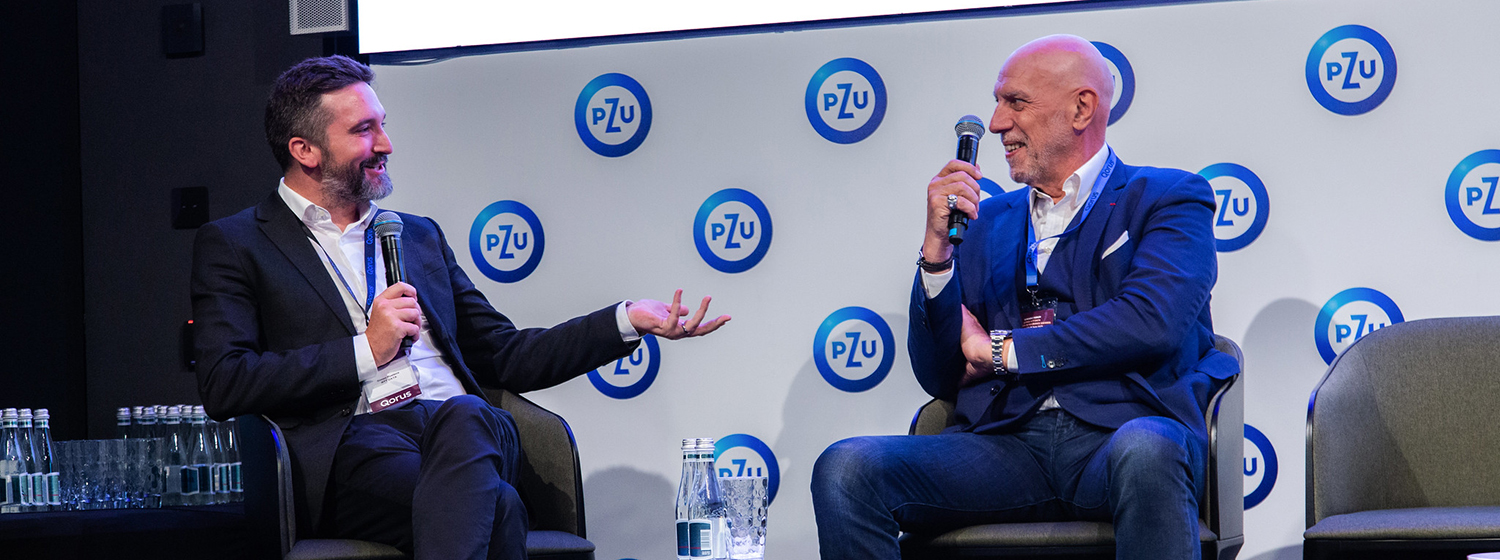
Kevin Spangenberg
Qorus
Analyst
The neobank moment is upon us. After crashing onto the financial services scene the past decade, digital-only banks have made their mark on the industry, appealing to the next generation of customers while forcing traditional banks to raise their digital games or be left behind.
Now, the challenge facing these banks is moving from disruptive upstarts to established players. The journey to achieving that status may differ depending on the country, but for all of them, they will need to become profitable and continue their growth.
In this report, we talked to top level managers and executives from many of the biggest names. Their answers provide an inside look at what these banks are doing and how they plan to keep disrupting the industry.
Neobanks have had their moment, now what?
Neobanks take up a lot of oxygen in financial services discussions. But after the past decade, they are no longer the new kids on the block. So where do they go from here?
When neobanks crashed onto the financial services scene circa 2015, they put the industry on notice. These new players were backed by venture capital and freed from the shackles of legacy systems. They were tech companies first, banks second. They had slick marketing and easy-to-operate interfaces. Everyone wondered: “Are these guys for real? Would everyone under the age of 35 bolt for the digitally-beautiful – but branchless – pastures of the neobank world?”
Six years on, we can survey the landscape and assess the neobank impact on the financial services industry. At the top, we can say one thing with certainty: they pushed traditional banks to up their digital game. As with any industry, when new entrants arrive with exciting ideas and tools, they may at first be resisted or mocked by existing players (“A bank without branches, how would that work?”), but ultimately the ideas – if they are good – are absorbed by others and spur further innovation.

So, traditional banks have radically improved their digital offerings. Many now offer fully digital onboarding, instant payments, and marketplaces full of services – services that were pioneered by neobanks. But does that mean that neobanks have fulfilled their role as digital instigator and can be satisfied with a job well done? Or are they still growing in stature, siphoning off customers from legacy institutions, and becoming the established banks of tomorrow? Let’s dive further into the state of play.
Opportunity – and difficulties – due to the pandemic
The Covid-19 pandemic has been a double-edged sword. The nature of the pandemic – people forced to stay home, bank branches being closed – has meant people have had to manage their finances from afar. At first glance, this would appear to be the ideal scenario for neobank uptake. And the numbers did indeed show that people were interacting digitally with their bank in record numbers. The Accenture 2020 Global Banking Consumer study found that “half (50 percent) of consumers currently interact with their bank through a mobile app or website at least once a week, compared with just 32 percent two years ago.” With people sitting at home and spending more time on their screens than ever, surely the exceptional digital experiences delivered by neobanks would spur adoption.
Unfortunately, the other side of the sword is the near-total stoppage of international travel. And travel has often been a gateway to neobank usage. Neobanks traditionally offer low or non-existent fees on foreign transactions. The lack of foreign fees has been an attractive feature for frequent travelers stuck with the high fees of traditional banks. With travel bans in place all around the world, international travel - especially for tourism and anything non-essential - completely vanished, and along with it a reliable introduction to neobanks.
This has led to disappointing adoption numbers. If we look at the Accenture study once more, we see that only 3.8% of consumers switched their primary account in 2020. People may have been managing their finances from their home, but they didn’t jump ship for a new bank. It appears they opted to forge ahead with the digital tools from their digital provider. The good news is international travel is rebounding, meaning people will again be looking to avoid fees when they are pulling out Euros on the Italian Riviera.

Difficulties going global
As many of these neobanks have matured, they have set their sights on markets far afield from their home countries. Banking regulations, however, are notoriously difficult to navigate. Whereas opening a retail shop in a country requires paying the proper taxes and fees, renting some property, and hiring employees, financial matters are inherently more complex. Every country or bloc has their own regulatory scheme – including deposit and capital requirements, differing KYC exigencies, and disclosure schemes - that neobanks must overcome.
For this reason, many banks have struggled to gain traction in new locales. N26 pulled out of the U.K., citing Brexit and unexpected regulatory hurdles (Many believe the exit was actually a result of them struggling to break into an already saturated digital banking market). Revolut pulled out of Canada earlier this spring. Monzo has had troubles establishing itself in the U.S. These are just some of the signs that global expansion is not coming easily to everyone.
Ultimately, competition is fierce. In a fractured landscape with a million different places to store one’s money, it can be different to break through in your own country, much less one halfway across the world.
Path to profitability
It is no secret that digital banks have raised huge amounts of money. Revolut raised $500 million last summer and is undergoing another financing round at the moment, eyeing a $10-15b valuation. But that valuation is merely what Revolut’s private investors believe it to be worth. It is not a firm valuation that is validated by the market (see WeWork). Investors and founders are counting on continued user growth and scaling. That is why these banks are spending the bulk of their raised funds on user acquisition. Revolut claims 10m global users. N26 just announced they hit 7m customers. With a large user base accumulated thanks to ‘hyper-growth’, the idea is that at some undetermined point in the future, the bank will start to turn a profit.
The big customer numbers, however, can be misleading. When neobanks make a grand announcement about finally reaching the umpteenth million customer, that doesn’t necessarily mean those 5 million customers are using the neobank as their primary bank. In fact, most customers still keep a majority of their deposits with traditional institutions. In the aforementioned 2020 Accenture survey, they found that the proportion of customers that actually use their neobank account as their primary account remains very low at 12%.
As it stands, most of these digital banks, just like their forerunners in the startup world, are not profitable. They continue to report sustained losses years after their founding. Amsterdam-based Fintech Consultancy Group analyzed more than 150 challenger banks worldwide. Every digital bank they observed has negative profitability, losing money on every customer. The only way they sustain their losses is by continually raising more money from private investors. At some point, investors will demand a return on their investment. (You will see, however, that some of the neobanks we interviewed for this report are indeed already profitable.)
So, while neobanks have had incredible success in signing up customers, those customers haven’t equaled the kind of profits one might expect. If digital banks want to become big, global banks, they will need to convince millions of people that they are more than just a no-foreign-fee card to use on holiday. They need to become the primary account for their users. Being the primary account means a larger deposit base that can serve as a base for a profitable lending model. Lending is what turned their banking forebears into the global giants we know today.
Furthermore, neobanks are counting on subscriptions to lead them to profitability. They are adding services in hopes of creating an attractive bundle that will entice customers to pay €5-10/month. The subscription-based model can work, but customers need to feel like they are getting good value for their money. As a neobank customer myself, I appreciate some of their features but have yet to pull the trigger on signing up for a paying tier. The value just isn’t there. Can a neobank develop a bundle that delivers all the services a customer may need? And what might this look like? Surely effortless financial management, a cashback offer, the ability to invest and grow your money, insurance to cover anything life might throw your way, and some unique and special experiences to top it all off. But until that is what these bundles contain, neobanks will struggle to turn their millions of customers into recurring revenue.
What comes next?
Success for a neobank doesn’t need to be defined as becoming the predominant financial institution in its respective country. Nor do failed international expansion plans spell doom for a company. They do, however, need to become profitable to ensure survival. Venture capital funding can’t go in perpetuity.
That is why the question of what comes next for these banks is so crucial. We have already seen some neobanks fail (see Bó in the UK or Xinja in Australia), and hope the same fate does not befall any of the banks included in this report. Could some of these banks consolidate under one roof? It is possible. Or could they maybe be bought out by a larger, more traditional bank? It wouldn’t be surprising to see some major acquisitions in the coming years as early investors see a deal that is too good to pass up.
Some neobanks are already being acquired by larger institutions. 86 400, the Australian neobank, is one such example. National Australia Bank (NAB) finalized their acquisition of the neobank earlier this year in order to combine it with their own digital bank, UBank. The combined entities will seek to continue delivering an outstanding alternative banking experience to Australian customers.
Another possibility is they keep ticking along, with some becoming profitable and growing in size, while others struggle with a few even closing their doors; all part of the natural churn of the business and banking world. Many of these banks have become established players in a diverse financial services ecosystem. Just because they haven’t become a global behemoth like an HSBC, Uber, or Netflix in a few years’ time doesn’t reflect a failure.
In sum, the industry-toppling predictions that many have made have yet to come to fruition. The financial services industry is still standing, bank branches can be found on your street, and the biggest banks from 2005 are the biggest banks in 2021. But their impact on digital banking services is incalculable. Everyone that banks from their phone can thank the digital challengers for raising the bar. Neobank as a name may no longer be as apt, given the amount of time that has passed. Their other name, challenger banks, is far more fitting. Because, as you’ll see from the following interviews, none of these banks are finished innovating and challenging everyone in the industry.
Interview
Neobanks and the next step: illimity
Carlo Panella, Head of Direct Banking and Chief Operations Officer at illimity, describes how the organization has grown from a...
Neobanks and the next step: Inter
João Vitor Menin, CEO at Brazilian neobank Inter, discusses how their marketplace and its associated partnerships are at the heart...
Neobanks and the next step: kakaobank
Jayden Hwang, spokesperson at kakaobank, explains how their explosive growth from the very beginning set them on a path to...
Neobanks and the next step: P.F.C.
Kevin Albrecht, Co-Founder and CEO at P.F.C. in Sweden, talks about the bank being a product company at heart.
Neobanks and the next step: Revolut
Alan Chang, SVP Revolut, talks about how the world’s biggest neobank is on a mission to create a global superapp...
Neobanks and the next step: Starling Bank
Adnan Ahmed, Head of Strategy at Starling Bank, outlines the fintech’s plans to keep setting the pace for the banking...
Neobanks and the next step: Timo
Henry Nguyen, CEO of Timo in Vietnam, discloses how his bank aspires to be the “best 2nd account” in the...
Neobanks and the next step: Tinkoff
Stanislav Bliznyuk, Chairman of the Management Board at Tinkoff Bank, discusses the many impressive accomplishments of his institution and how...
Neobanks and the next step: Tonik
Tonik, the Filipino neobank, has gotten off to an incredible start since its launch earlier this year. Greg Krasnov, their...
Neobanks and the next step: Ualá
Andrea Arrébola, Head of Payments at Ualá in Argentina, talks about the real change the bank is bringing to peoples’...
Neobanks and the next step: Upgrade
Renaud Laplanche CEO at Upgrade, talks about how the company’s “credit first” strategy has been a springboard toward already becoming...
Neobanks and the next step: Banca Widiba
Marco Marazia, General Manager of Banca Widiba, speaks about the bank’s digital efforts that incorporate a human touch as a...
Neobanks and the next step: MAJORITY
Magnus Larsson, CEO and Founder of MAJORITY, the leading digital bank and community membership for immigrants living in the United...
Neobanks and the next step: N26
N26's Chief Growth Officer, Alexander Weber, describes the customer experience that sets the German neobank apart from its competitors, and...
Neobanks and the next step: Salmon
In January 2024, fintech Salmon secured regulatory approval to become a licensed bank in the Philippines. Pavel Fedorov, Co-Founder of...
Neobanks and the next step: HugoBank
HugoBank received its No-Objection Certificate from the State Bank of Pakistan in January 2023. Muhammad Faysal, who leads Partnerships, Growth...
Neobanks and the next step: Parabank
Parabank is a digital challenger bank focused on improving financial access for people with disabilities in Brazil. Its founder, Gelson...
Neobanks and the next steps: MoneyLion
More than just a simple neobank, MoneyLion is a top financial marketplace and ecosystem in the United States with more...

























